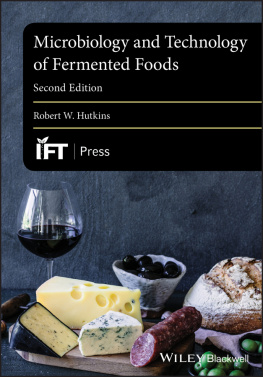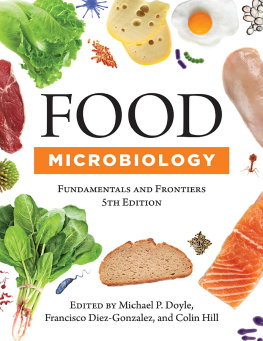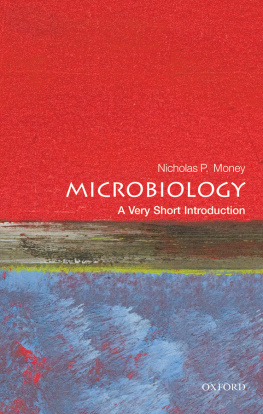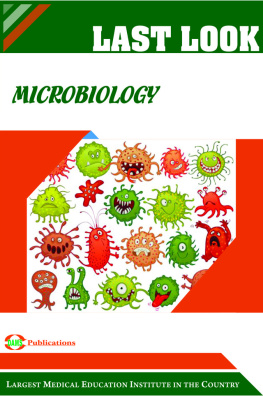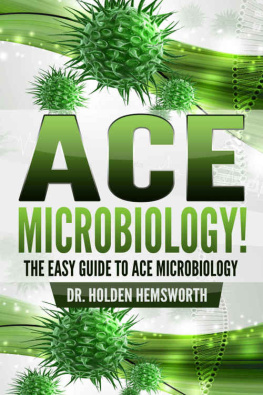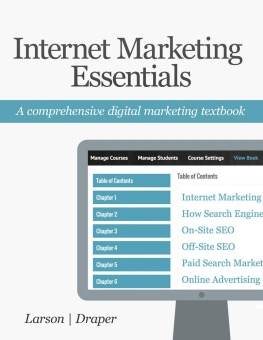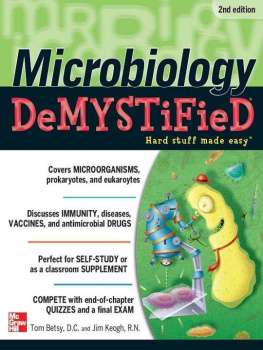Mossel - Essentials of the Microbiology of Foods: a Textbook for Advanced Studies
Here you can read online Mossel - Essentials of the Microbiology of Foods: a Textbook for Advanced Studies full text of the book (entire story) in english for free. Download pdf and epub, get meaning, cover and reviews about this ebook. City: Chichester, year: 1995, publisher: John Wiley & Sons, genre: Children. Description of the work, (preface) as well as reviews are available. Best literature library LitArk.com created for fans of good reading and offers a wide selection of genres:
Romance novel
Science fiction
Adventure
Detective
Science
History
Home and family
Prose
Art
Politics
Computer
Non-fiction
Religion
Business
Children
Humor
Choose a favorite category and find really read worthwhile books. Enjoy immersion in the world of imagination, feel the emotions of the characters or learn something new for yourself, make an fascinating discovery.

Essentials of the Microbiology of Foods: a Textbook for Advanced Studies: summary, description and annotation
We offer to read an annotation, description, summary or preface (depends on what the author of the book "Essentials of the Microbiology of Foods: a Textbook for Advanced Studies" wrote himself). If you haven't found the necessary information about the book — write in the comments, we will try to find it.
Mossel: author's other books
Who wrote Essentials of the Microbiology of Foods: a Textbook for Advanced Studies? Find out the surname, the name of the author of the book and a list of all author's works by series.
Essentials of the Microbiology of Foods: a Textbook for Advanced Studies — read online for free the complete book (whole text) full work
Below is the text of the book, divided by pages. System saving the place of the last page read, allows you to conveniently read the book "Essentials of the Microbiology of Foods: a Textbook for Advanced Studies" online for free, without having to search again every time where you left off. Put a bookmark, and you can go to the page where you finished reading at any time.
Font size:
Interval:
Bookmark:

First we eat, then we do everything else
M.F.K. Fisher
Food plays an important part in everyday life. But when being a food scientist or in the food business, food gets to be an even bigger part of your life. Our team at the Food Microbiology and Food Preservation research group (FMFP-UGent) at Ghent University during its academic tasks in education, research, scientific activities at committees, but also in interaction with many food companies and stakeholders in the food supply chain in projects or contract work, has built up considerable expertise on the microbiological analysis of a large variety of foodstuffs. Being situated in Ghent, and thus close to Brussels, the heart of Europe, we intrinsically have to understand and deal with legal EU criteria or action limits. The latter is the reason why this book is mainly oriented towards inclusion or making reference to EU legal microbiological criteria for foodstuffs as well.
What originally started off, more than 30 years ago, as a small set of microbiological guidelines elaborated as an internal document to be used within our FMFP-UGent research group, to pass on knowledge concerning the expected microbiological status of foods for Master (graduate) students, young researchers and trainees/employees new in the business of food microbiology. It has evolved via the former Dutch booklet (issued in 2010) encompassing especially many tables of food categories and guidelines but little text, into the present book of Microbiological Guidelines. The present (English) book has doubled in the number of pages, although I always thought that English was a more condensed language than Dutch. There are several reasons why this book has expanded.
- The food industry is innovative in introducing new processing techniques and preservation methods, and the number of food types set to market is increasing. We aim to cover a wide(r) range of food types within this book.
- We also acknowledge that food culture is variable among countries, and to facilitate the exchange of information we thought it was useful to include some terminology per food category.
- Our FMFP-UGent group being situated at the Faculty of Bio-Science Engineering of Ghent University, the definition of food types and related microbiological guidelines is mainly driven by knowledge on the food production process and preservation methods of these food commodities and their impact on the microbial ecology of foods. This is reflected upon and explained somehow in the first text parts and the introductory section to each food category.
- Although food microbiology may seem simple to those who practice it on a daily basis, we know by experience that this world of microbes is quite diverse and evolving with always exceptions to the (man-made) rules of grouping and methods for detection. Therefore, the first text part also provides insights on definition and description of the microbial parameters and their function.
- Furthermore, we opted to also include a part on Sampling and Challenge testing as it is indeed not possible to talk about interpretation of test results if one has not well defined the purpose of testing in the first place. Thinking about sampling and sampling plans is thus quite essential in the bigger picture of interpretation of test results. In addition, product sampling and testing alone will not provide safe and wholesome foods. Gaining knowledge on the food quality or food safety management system is essential. But also some project based testing (challenge testing, durability studies, environmental testing or microbial source tracking) might be useful to gain knowledge on the appropriateness of the product design, its storage conditions or the production environment. Approaches for this type of project work is thus also discussed in the first parts of the book.
- It seems that after all, setting microbiological guidelines is not an exact science and there is still on-going debate on what is acceptable quality and when good practices are indeed good enough. Therefore occasionally some reflections are made on the rationale for selection of microbial parameters and threshold values based on scientific and empirical knowledge gained throughout the years in graduate and PhD research and project and contract work executed at FMFP-UGent.
We are especially grateful to all these students and present and past collaborators who have spent some time at FMFP-UGent. By working and interacting with them, they have also contributed on the knowledge and progressive insight we gained to elaborate these microbiological guidelines.
Moreover, it is noted that at the end of the day, the setting of microbiological specifications or microbiological criteria is a risk management activity where the involved partners have to agree on the maximum level of a defined microbial parameter (food quality/hygiene parameter or food safety hazard) in a defined food type, at a certain stage in the food supply chain, that is technically achievable and appropriate for providing wholesome and safe food. The microbiological guidelines suggested in this book may be informative in the debate on the expectations of the microbiological status of foods in relationship to acceptance criteria specified between food business operators or action limits set by local authorities. It should be noted that at all times, microbiological criteria set by national or regional competent authorities are to be respected and foodstuffs should be in compliance to legal requirements as applicable on the local market where the product is sold.
Of course, the proof of the pudding is in the eating. So, although we think that through writing this book on microbiological guidelines we may help you on the interpretation of your test results, we would really like to have your feedback on this. So, please feel free to contact us and let us know, if you, as a quality or purchase manager in food business, as a student, researcher or teacher in food microbiology, as a consultant or service lab advising (small or medium) food companies or as an industry association, trader or competent authority find the information in this book useful.
We look forward to your comments.
Enjoy the reading
Mieke Uyttendaele
Ghent, February 7, 2018
Prof. dr. Mieke Uyttendaele (Ed.)
Microbial analysis of foods, food safety
Contact:
Prof. dr. An Vermeulen
Challenge testing and Predictive modeling
Contact:
Em. Prof. dr. Johan Debevere
Food Microbiology and Food Preservation
MSc. Anja De Loy-Hendrickx
Microbial analysis of foods
Contact:
Prof. dr. Liesbeth Jacxsens
Quality assurance and risk assessment in the agro-food chain
Contact:
Prof. dr. Frank Devlieghere
Food Microbiology and Food Preservation
Contact:
All authors are part of the Research Group Food Microbiology & Food Preservation (FMFP-UGent), Department of Food Technology, Safety & Health, Faculty of Bio-Science Engineering, Ghent University, Campus Coupure, Coupure Links 653, 9000 Gent, Belgium and involved in academic education, research and scientific support to stakeholders in their research area. Prof. Frank Devlieghere, An Vermeulen and Anja De Loy-Hendrickx are respectively director, co-director and quality manager of the FMFP-UGent food service lab; Frank Devlieghere is co-founder of Pack4Food (www.Pack4Food.be) and CPMF (http://cpmf2.be). An Vermeulen is part time working for respectively Pack4Food and CPMF. Liesbeth Jacxsens is part-time working for Ciboris (Primoris Holding).
Font size:
Interval:
Bookmark:
Similar books «Essentials of the Microbiology of Foods: a Textbook for Advanced Studies»
Look at similar books to Essentials of the Microbiology of Foods: a Textbook for Advanced Studies. We have selected literature similar in name and meaning in the hope of providing readers with more options to find new, interesting, not yet read works.
Discussion, reviews of the book Essentials of the Microbiology of Foods: a Textbook for Advanced Studies and just readers' own opinions. Leave your comments, write what you think about the work, its meaning or the main characters. Specify what exactly you liked and what you didn't like, and why you think so.

